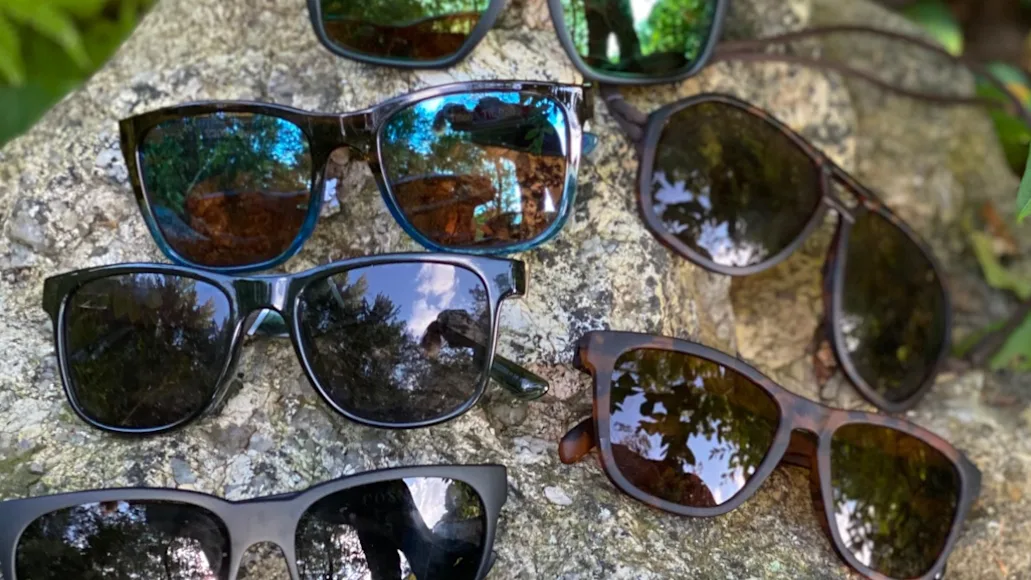_We may earn revenue from the products available on this page and participate in affiliate programs. Learn more ›
_
Best Men's

Bajio Toads
LEARN MORE
Summary
A combination of performance, style, and versatility make the Bajio Toads a top choice for the modern outdoorsman.
Best Women's
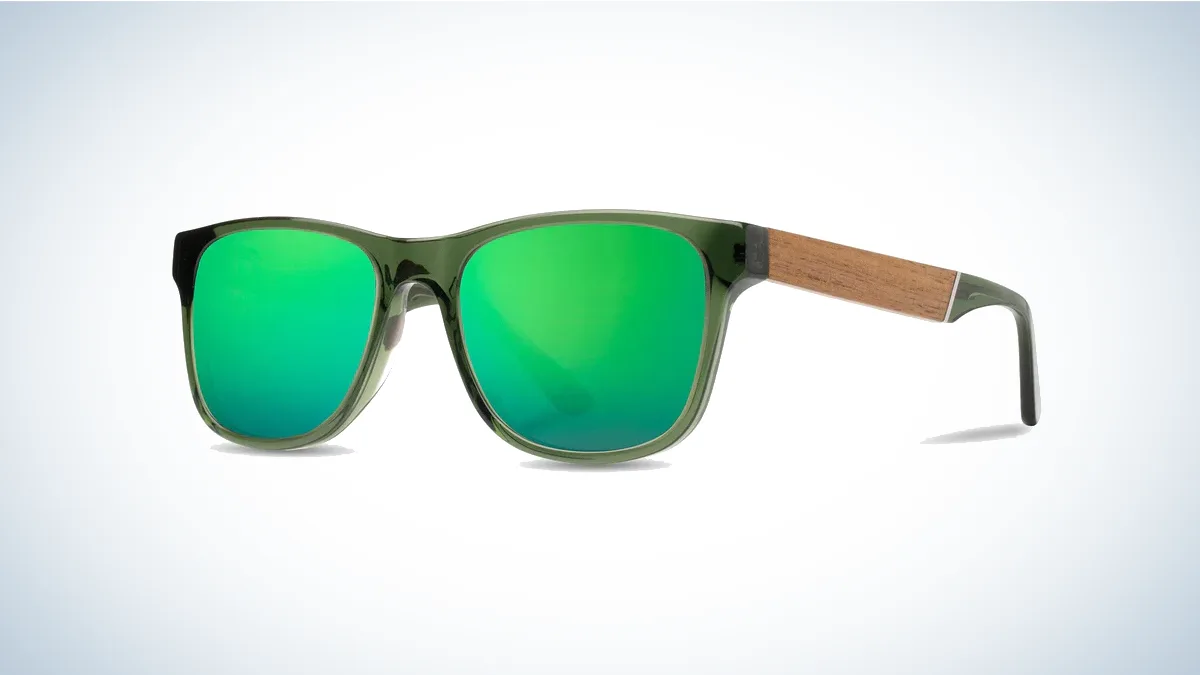
Shwood Camp Trail
LEARN MORE
Summary
These comfortable shades look as good as they perform out on the trail.
Best Polarized
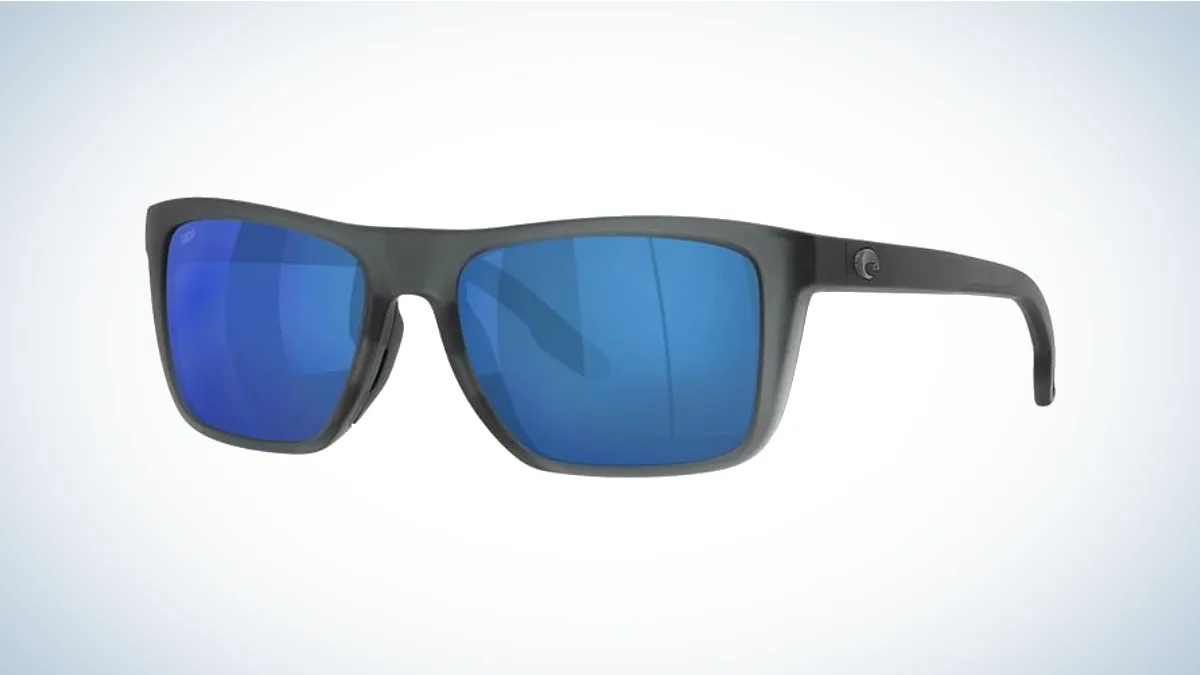
Costa Mainsail
LEARN MORE
Summary
Whether you’re hiking near water or up a peak, these polarized shades will cut the glare for sweet views.
Unlike the robust market for fishing sunglasses
or cycling lenses, the selection of sunglasses for hiking is limited—at least at first sight (pun intended). Hikers are left to navigate the expansive world of outdoor recreational eyewear in their search for the perfect pair on the trail. Fret not, for we’ve undertaken the task.
Over months of testing and many hours on the trail, we sifted through polarized lenses galore to uncover the best choice for hiking adventures. Whether you’re summiting glacier-capped mountains, strolling a nature trail in a city park, or backpacking through dense and dark forest, we’ve found the sunglasses that will provide comfort, durability, and style on your next adventure.
Best Men’s: Bajio Toads
Best Women’s: Shwood Camp Trail
Best Polarized: Costa Mainsail
Best Budget: Goodr OG
Best Lightweight: Koo Cosmo
Most Durable: Ombraz Classic
Most Comfortable: Fin-Nor Tilloo
How We Picked the Best Sunglasses for Hiking
I used my two decades experience as a frequent recreational hiker and eight years as a hiking guide to help test and choose our picks for this round up. Since sunglasses fit can be subjective to the face shape of the person, I also enlisted help from a male tester—and fellow outdoors enthusiast—to narrow down fit and provide notes on specific shades.
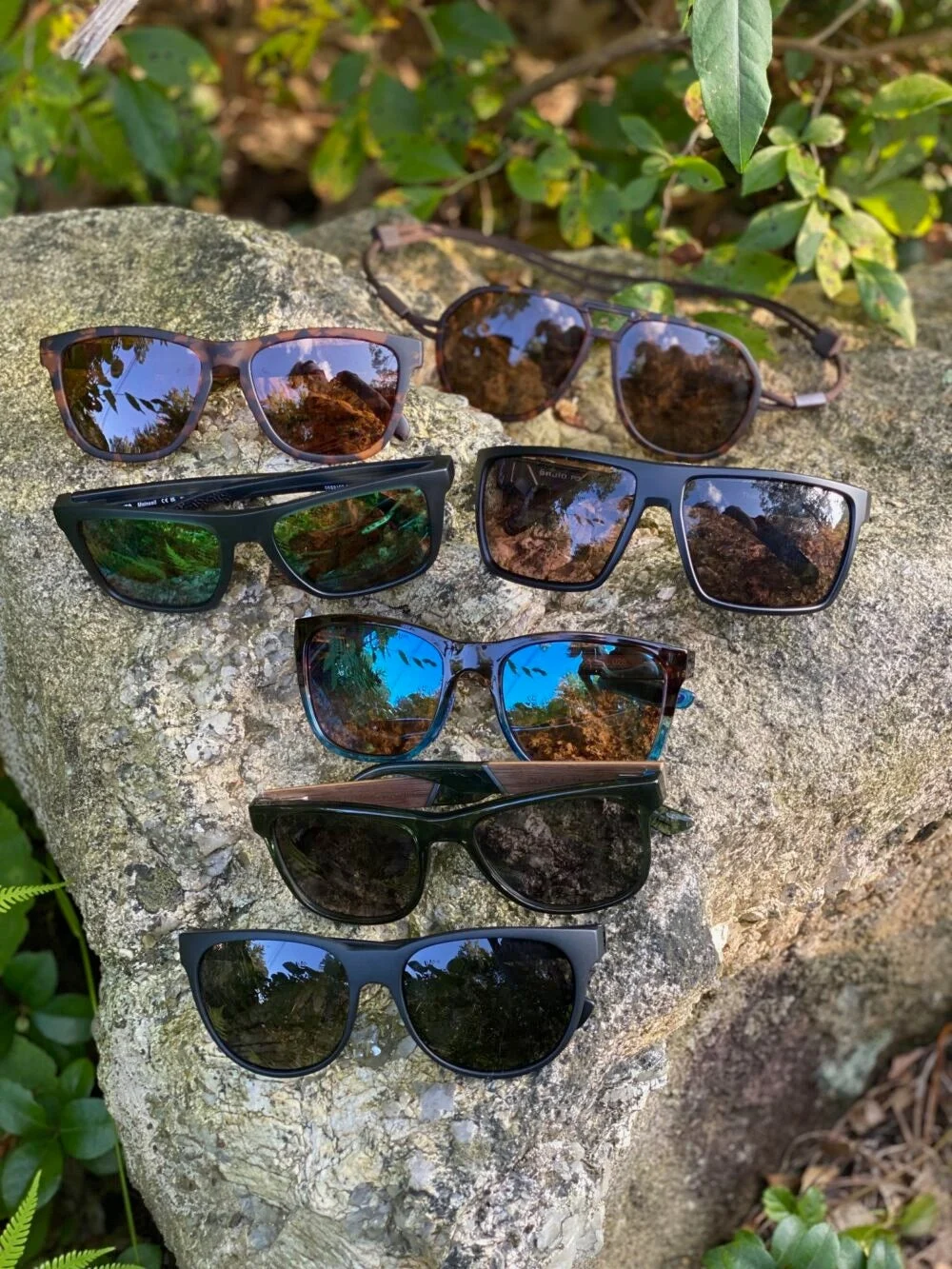
We tested pairs from some of the most popular sunglass brands out there. Lindsey Lapointe
I designed a multi-step testing approach. Each pair was worn for a minimum of 20 hours in a variety of hiking conditions including above the tree line on mountain ascents, cloudy and shady forests, extreme bright sun by ocean and lakes, and long and sweaty backpacking trips. The steps to choosing our best picks included:
Market Research and Selection: I began by polling current hikers on their preferred sunglass brands. I also researched established brands known for their outdoor eyewear. Once my list of possible sunglasses was narrowed down, I acquired samples to test in the field. We were attentive to select a diverse set of sunglasses in various lens types, frame materials, and designs to get a comprehensive cross-section.
Field Testing: We tested the sunglasses over various terrains, lighting conditions, and weather scenarios. Both male and female testers wore the sunglasses over extended periods of time.
Analysis: We assessed each pair of sunglasses for comfort, fit, durability, and performance under real-world hiking conditions. We also took into consideration price and value.
Not all sunglasses we tested made the cut. By practicing this methodology, we were able to confidently recommend the best hiking sunglasses and ensure you are well-equipped to face the trail with comfort, clarity, and style.
Best Sunglasses for Hiking: Reviews and Recommendations
Best Men’s: Bajio Toads
Best Men's

Specs
Fit: Large
Lens Material: Polycarbonate or Glass
Lens Color: Mirror in blue, green, gray, silver, copper, rose, and violet
Optional Features: Prescription lenses, readers, all polarized
Pros
Excellent lens quality
Wrap design provides full coverage
Lots of lens options including color and prescription lenses
Cons
Design better suited for certain face shapes
During our rigorous testing, the Bajio Toads sunglasses
proved to be excellent across the board. The wrap design blocks light and shields your eyes from the harshest glare, which was particularly noticeable on water as well as above tree line. I was impressed by the thoughtful details like the non-slip rubber nose pads and rubber temple tips which kept the shades on my nose, even with sweat and rigorous activity.
These sunglasses are polarized and have excellent clarity. I tested the copper glass lenses, which were a perfect middle-of-the road coverage for medium light and the glass lenses ensure they remain scratch-free for a long time. These sunglasses also rose to the top of the pack because of the wide range of options they offer. You can choose from seven lens colors in both glass and polycarbonate so you can tailor your pair to your specific needs and preferences (including prescription options).

Our male tester raved about the comfortable fit of the Bajio Toads. Lindsey Lapointe
While these sunglasses excel in many aspects, it’s worth noting that their curve design and large lenses may not suit every face shape. While they were a comfortable and perfect fit on our male tester, they didn’t quite meet my personal preferences. I found them slightly heavy on the bridge of my nose and tighter on the sides. However, this drawback was overshadowed by the excellent frame quality and comprehensive coverage.
Best Women’s: Shwood Camp Trail
Best Women's

Specs
Fit: Medium
Lens Material: Polycarbonate
Lens Color: Polarized gray, blue, and green
Optional Features: All polarized, multiple frame colors
Pros
Great value
Stylish
Environmentally friendly
Cons
Heavy
The Shwood Camp Trail sunglasses
provided a blend of rugged durability, sustainable style, and an excellent price that puts it as our choice for best sunglasses for hiking in the women’s category. As the name implies, the “Trail” sunglasses are crafted with hikers in mind. The simple and classic shape works well with a variety of faces. The spring hinges allowed me to wear these comfortably without pinching my temples or applying too much pressure. The sunglasses use plant-based bioplastic and wood inlays that create a sustainable product with a great look.

These Shwood sunglasses proved during testing that they can take a beating. Lindsey Lapointe
Although I prefer glass, I couldn’t find fault with the polycarbonate polarized lenses. During intense testing, I wore the Shwood Camp Trail sunglasses for a week of hiking in the North Cascades and Mt. Rainier National Parks. They proved to be durable since they were frequently shoved in and out of a backpack, jammed into a car cup holder, and tossed onto picnic tables. . I liked the fit; however, I should note that they felt a little heavier than some of the other shades tested. That said, they were easily a top pick due to their style, value, as well as their overall durability.
Additionally, I loved that these sunglasses come with a custom sleeping bag travel pouch, microfiber cleaning cloth, carrying cord, and 1-year warranty.
Best Polarized: Costa Mainsail
Best Polarized

Specs
Fit: Large
Lens Material: Polycarbonate or glass
Lens Color: Polarized mirror in green or blue
Optional Features: Prescription lenses, frame color options, all polarized
Pros
Excellent lens quality
Full coverage
Durable and scratch-resistant coating
Cons
Tend to fall down on medium/small faces
When you’re on the trail, filtering reflective glare is essential to provide relief to your eyes and a clear view of the trail and landscape. What stands out for the Costa Mainsail
is the premium polarized 580 lenses, making them some of the best polarized sunglasses
out there. During testing, we appreciated that they did an exceptional job of shielding our eyes from harsh light while simultaneously providing excellent clarity. We also noted that the lenses are surprisingly scratch-resistant thanks to the protective C-Wall coating.

The unisex design of the Costa Mainsail makes them suitable for both men and women. Lindsey Lapointe
The Mainsail performed admirably on a lake side trail on both sunny and cloudy days. They come equipped with micro side shields and hooding, effectively keeping out excess light- a feature I found invaluable when hiking in bright conditions. The grips on the temples and nose are there to ensure a secure fit, though I did notice some occasional slippage when looking down. However, it’s important to note that fit can be subjective, and our male tester did not have this issue.
Overall, the impressive glare reduction of the polarized green glass and overall lens quality moved the Costa Mainsail to the top of the pack.
Best Budget: Goodr OG
Best Budget

Specs
Fit: Medium
Lens Material: Plastic lenses
Lens Color: Mirror reflective or non-reflective
Optional Features: Lots of frame color options, all polarized
Pros
Stylish
Lightweight
Affordable
Cons
Lenses scratch easily
have become an absolute favorite for those hitting the trails for good reason. The “no bounce” feature—with its special grip-coated frame—lives up to its promise. The sunglasses stayed put during testing, even when I was sweating and out in the toughest terrains. The snug lightweight frame offers a comfortable fit and it comes in an endless options for patterns, making these a fun accessory to your hiking attire. Goodr’s glare-reducing, polarized lenses come in both mirrored and non-mirrored and provide decent clarity out of the box for a plastic lens. As for affordability, these sunglasses start at just $25 a pair, so they’re one of the best bargains out there.
One downside: I noticed during testing that these sunglasses tend to scratch easily, especially the mirrored lenses. Nevertheless, at this price point, you can replace them without spending a ton or buy multiple pairs for different occasions. They’re an excellent budget-friendly choice for hikers.
Best Lightweight: Koo Cosmo
Best Lightweight
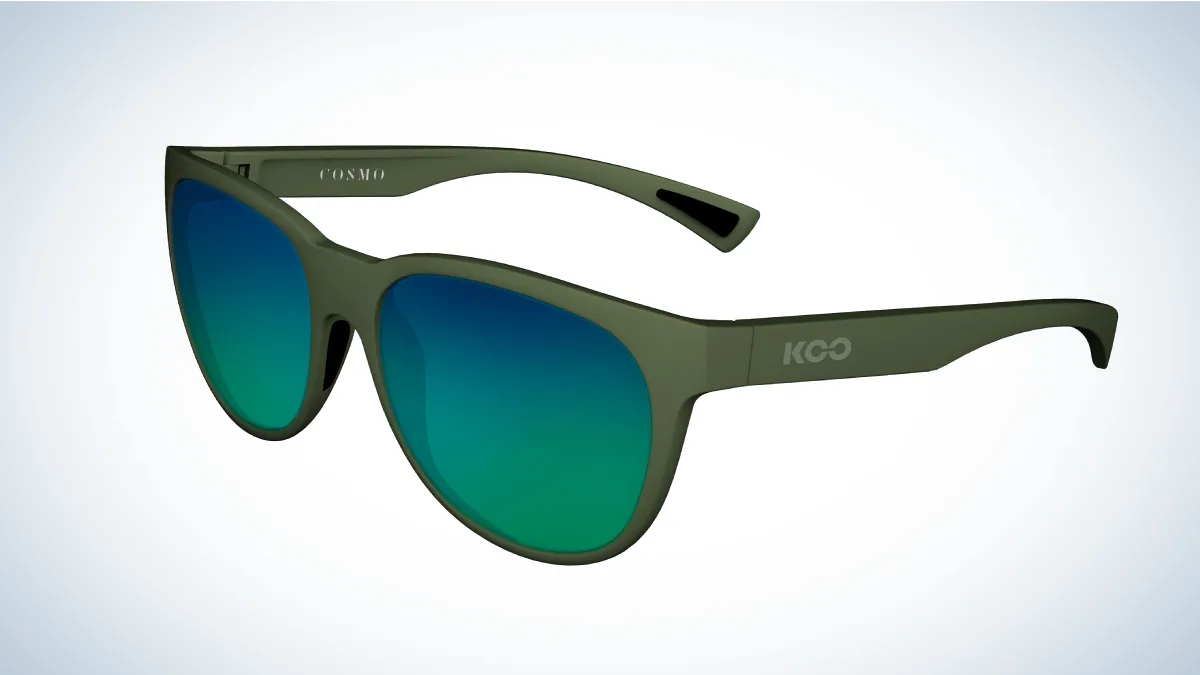
Specs
Fit: Medium
Lens Material: Zeiss polycarbonate
Lens Color: Mirror in blue, red, green, pink, and violet
Optional Features: Frame color options, polarized and non-Polarized
Pros
Ultralight
Comfortable
Grippy
Cons
Lower lens quality
Sometimes every ounce counts, and with the Koo Cosmo sunglasses
, you don’t have to sacrifice style and protection for light weight. Crafted from ultralight Grilamid polymer, the frame is exceptionally light and slightly flexible. This frame made it one of the most comfortable pairs we explored as well. With grippy nose pieces and temples, they stay comfortably in place throughout outdoor adventures. I tested both the mirrored and the polarized matte versions. The polarized matte variant, in particular, excelled at minimizing glare from water and made it a good fit for hiking.
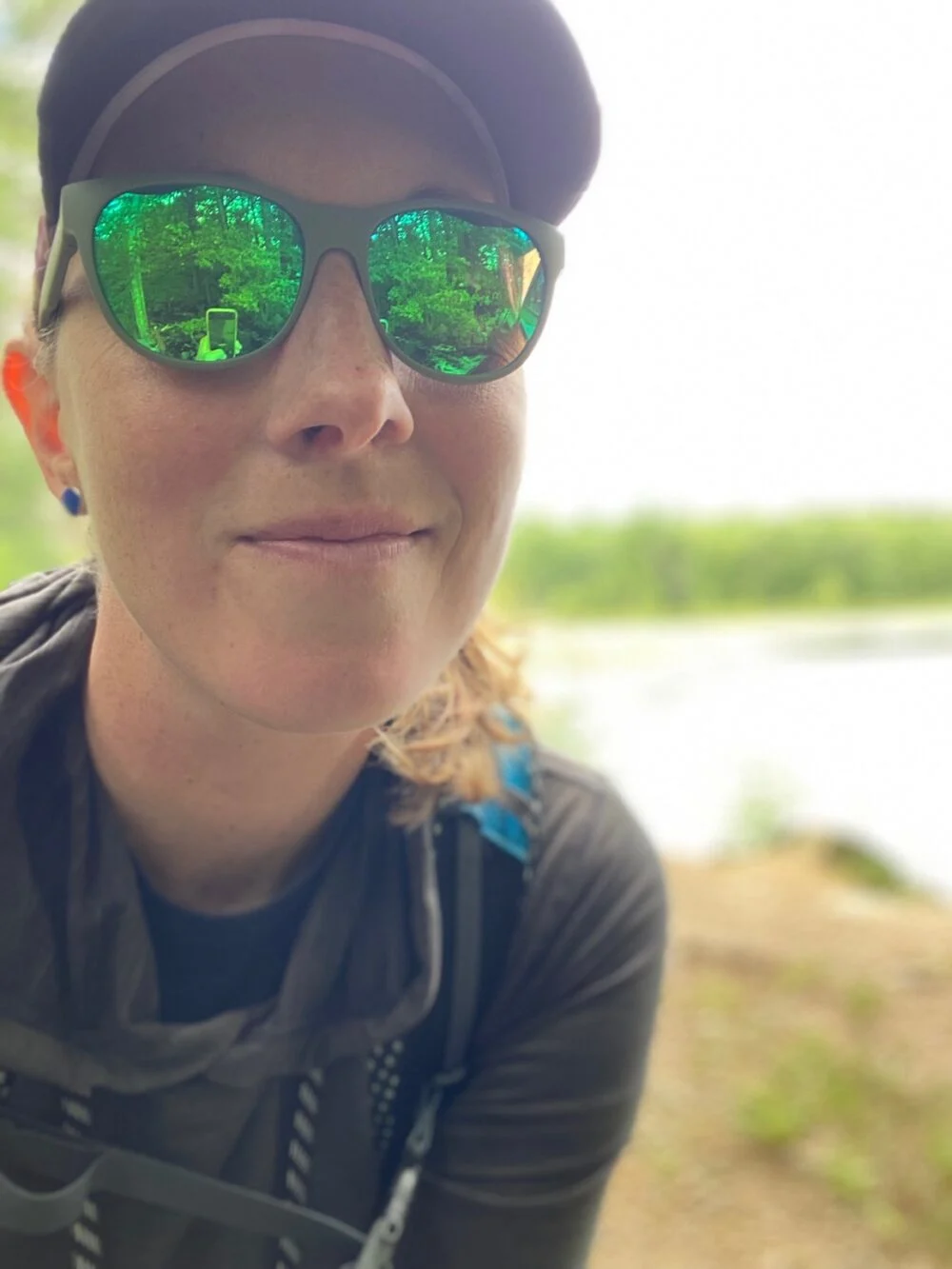
I could wear these Koo sunglasses for hours on end with zero discomfort. Lindsey Lapointe
While I commend Koo for utilizing Zeiss polycarbonate lenses, I noticed that they did not quite match the optical quality of glass competitors. During testing, there were a few small lens imperfections, and they tended to smudge relatively easily. However, if you prioritize an ultralight design, the Koo Cosmo sunglasses are unquestionably worth considering. They offer comfort, style, and functionality for your hiking adventures.
Most Durable: Ombraz Classic
Most Durable
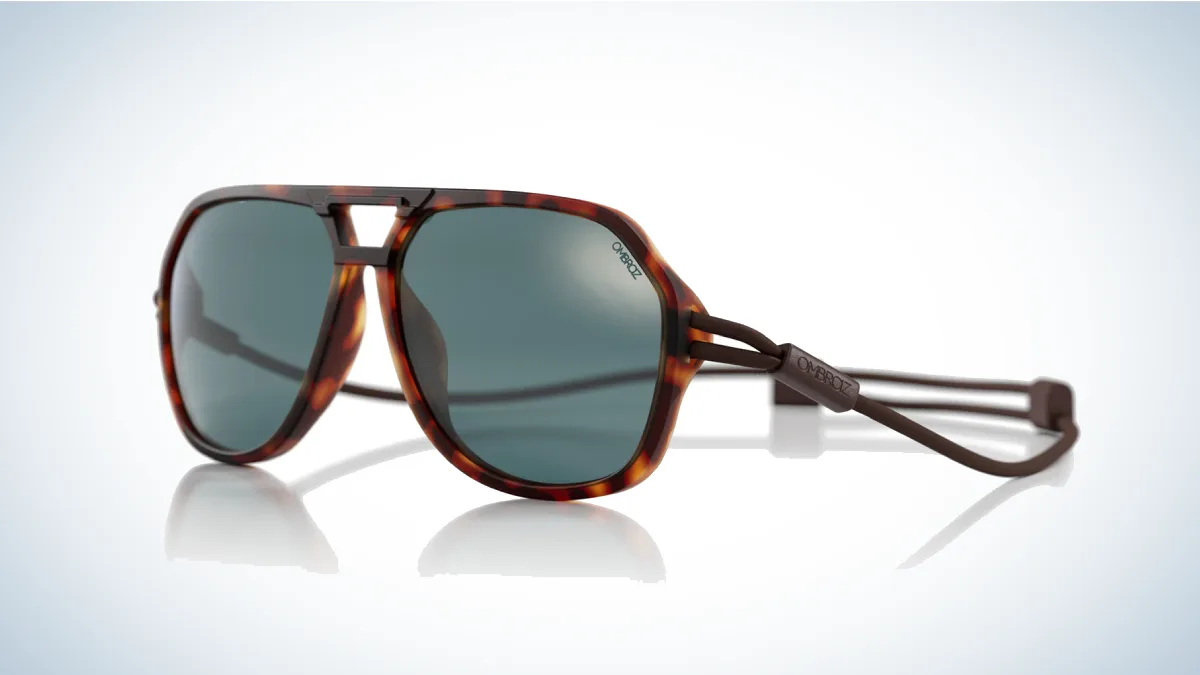
Specs
Fit: Medium
Lens Material: Polycarbonate
Lens Color: Gray, brown, and yellow
Optional Features: Prescription options, frames in regular or narrow, frame colors, side shields, all polarized
Pros
Durable
Packable
Comfortable
Cons
Learning curve to use
In our search for the most durable hiking sunglasses, the Ombraz Classic
emerged as the champion. These sunglasses have no side arms or hinges—instead, they are attached with a marine-grade cord that easily adjusts at the back of the head. In terms of durability, this means that there are no snapping side arms or hinges to break. In addition, they lie flat so you can easily pack and stow them in a back pocket or backpack
. This reduces the chance of the glasses to snap with pressure and makes them very portable. They are perfect for thru hikers and ultralight travelers.
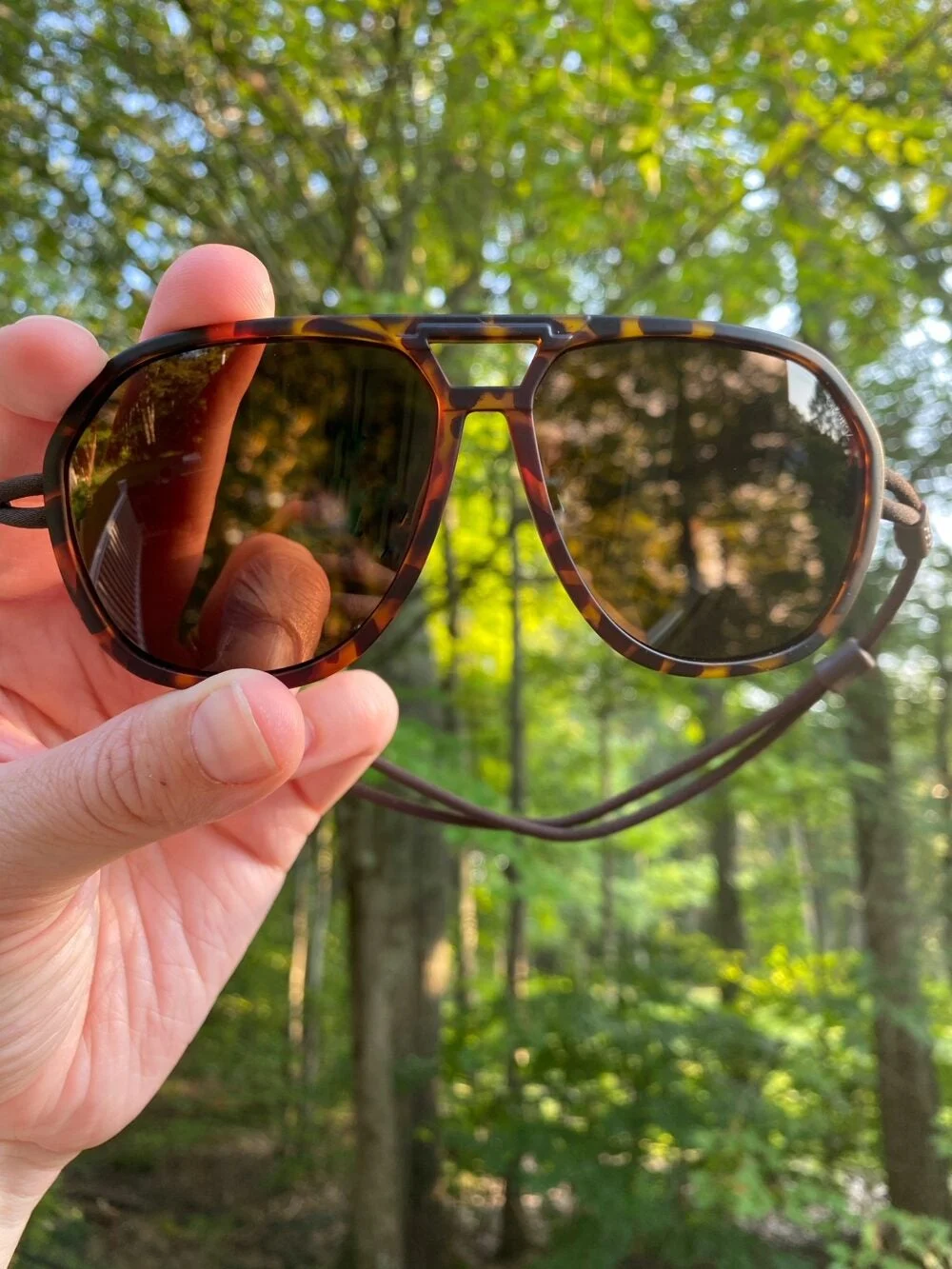
The unique armless design of these Ombraz sunglasses makes them both durable and comfortable. Lindsey Lapointe
We liked the Zeiss polycarbonate lens that came in multiple color options and polarized for cutting glare. We also tried them with and without the ventilated side shields and nose plug, which add a layer of protection and peripheral sunlight blocking on mountain peaks.
We were surprised how much we liked the armless zero-slip design. They’re a great option for people who are sensitive to sunglasses-arms squeezing their temples. The only drawback is that there’s a bit of a learning curve to using these shades. While I’m used to pushing glasses on top of my head or hat, these hang like a necklace when not in use. However, this is a small adjustment when considering the gains of ultralight, durable, and portable sunglasses.
Most Comfortable: Fin-Nor Tilloo
Most Comfortable

Specs
Fit: Medium
Lens Material: Polycarbonate or glass
Lens Color: Blue mirror, green mirror, copper, and gray
Optional Features: Prescription lenses, all polarized, frame color options
Pros
Comfort fit
Spring hinged arms
Excellent lens clarity
Cons
Expensive
After subjecting them to multiple hikes and varying outdoor conditions, the Fin-Nor Tilloo sunglasses
are our top pick for most comfortable. To start, the frames struck a perfect balance in weight—not too light that they felt flimsy and not too heavy that they hurt or made me sweat. The rubber nose and side arm grips kept them securely in place and the hinged arms cleverly avoided squeezing my temples, contributing to an incredibly comfortable fit. We also found that the classic square shape of the Tilloo was not only flattering on most faces, but also comfortable to a wide range of users.
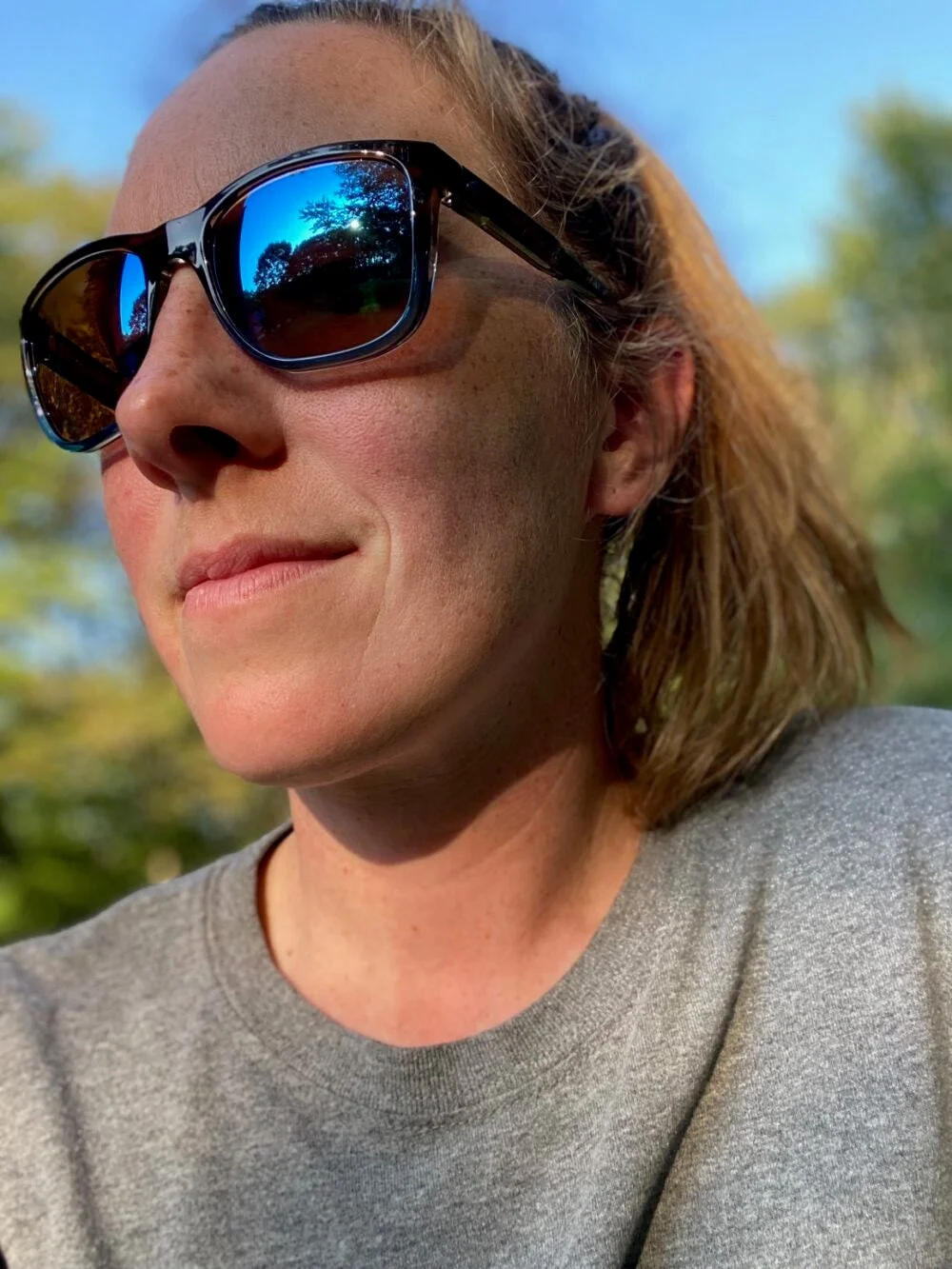
I couldn’t find any obvious faults with these comfy Fin-Nor sunglasses. Lindsey Lapointe
As a sunglass brand marketed toward fishermen and water sports, we weren’t surprised that the lens quality was fantastic. I tested the version with the L4 glass polarized lens, which had distortion free clarity. Overall, in terms of performance and comfort, I couldn’t find any flaws. However, these exceptional qualities come at a hefty price, with the glass lens version retailing over $200. This puts the Fin-Nor into an elite range of sunglasses, but if you’re willing to make the investment, Fin-Nor are undoubtedly the epitome of comfort and clarity.
What to Consider When Choosing Sunglasses for Hiking
Picking out hiking sunglasses should be a fun shopping experience. Before you choose a pair, consider these factors.
Fit
Hiking sunglasses should be snug so they don’t fall off, but also comfortable with no pinching. Look for spring hinges, nose pads, and arm pads to keep them snug and comfy.
Environment and Weather
Consider the diverse outdoor conditions you’ll face, from intense sun to overcast skies. Opt for a lens tint (see our FAQs about this), polarization, and face coverage that matches the environment in which you usually hike.
Durability
We recommend prioritizing rugged backpacking sunglasses that can endure rough handling in your pack, being set on rocky terrain, and constant exposure to UV rays, rain, snow, and sweat.
Versatility
Look for hiking sunglasses that can serve multiple purposes, like for driving, everyday life, or various other outdoor activities. This is especially important if you’re investing a good amount of money in a pair.
Prescription Options
If needed, ensure you find prescription hiking sunglasses that cater to your requirements. Check out our picks for Best Mens, Best Polarized, and Most Durable for a prescription option.
FAQs
Q: What color lenses are best for hiking?
Although the best lens color depends on the environment and overall brightness, I recommend lenses with a brown tint. This color provides excellent contrast and depth perception which can be helpful when navigating changing terrain. Brown and copper lenses are effective at reducing glare and enhancing overall visibility in medium light scenarios while maintaining natural color perception.
However, if you are on an extremely bright hike—like on a glacier or open water—you might want to opt for a dark gray or green that provides maximum light blocking.
Q: Are polarized sunglasses better for hiking?
Polarized sunglasses are generally better for hiking. This is because the best polarized sunglasses are designed to reduce glare, which is beneficial when you’re outdoors in bright conditions or near reflective surfaces like water, snow, asphalt, or rock. By reducing glare, polarized sunglasses enhance visibility, reduce eye strain, and improve the overall hiking experience. The only real downside to polarized sunglasses are they can make it difficult to read certain digital screens.
Q: How do I get scratches out of my sunglasses?
It is difficult and sometimes impossible to get scratches out of sunglasses. However, there are a few methods you can try. First, gently clean the lenses with a microfiber cloth
and eyeglass cleaner
to remove debris. Next, apply a small amount of non-abrasive toothpaste or baking soda mixed with water to the scratched areas. Then, use a soft cloth to rub the paste in a gentle, circular motion. Lastly, rinse and repeat if necessary. While this method has worked for some, it’s no guarantee it will fix your shades. Prevention is key, so store your sunglasses in a protective case and avoid placing them down on rough surfaces.
Best Sunglasses for Hiking: Final Thoughts
Best Men’s: Bajio Toads
Best Women’s: Shwood Camp Trail
Best Polarized: Costa Mainsail
Best Budget: Goodr OG
Best Lightweight: Koo Cosmo
Most Durable: Ombraz Classic
Most Comfortable: Fin-Nor Tilloo
It’s hard to think of a piece of hiking gear that will get more use than sunglasses. They protect your eyes on a hike and add style to your face. The best hiking sunglasses are ones that feel good and shield your eyes against harmful rays.
Why Trust Us
For more than 125 years, Field & Stream has been providing readers with honest and authentic coverage of outdoor gear. Our writers and editors eat, sleep, and breathe the outdoors, and that passion comes through in our product reviews. You can count on F&S to keep you up to date on the best new gear. And when we write about a product—whether it’s a bass lure or a backpack—we cover the good and the bad, so you know exactly what to expect before you decide to make a purchase.

